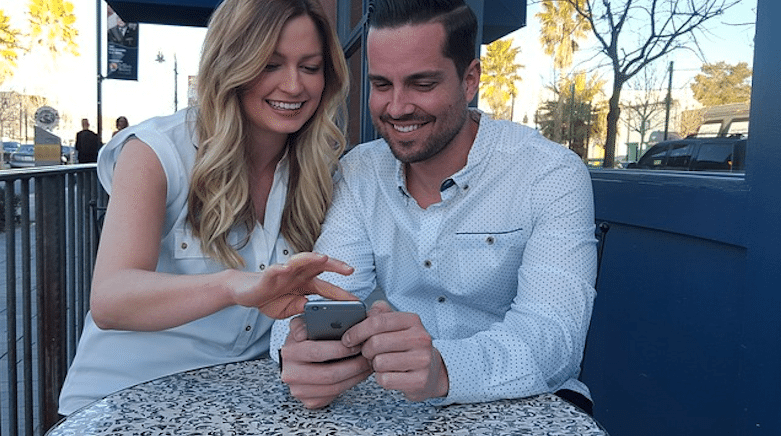Forbes has dubbed 2016 the year of the millennial consumer. Large and small companies hope to gain the attention of these younger consumers, but traditional strategies like TV or print ads may not work, since many of them stream videos and read news via social media.
To help you understand the marketing preferences of this group, we talked to Issa Sawabini, a partner at Fuse Marketing, an agency that specializes in connecting brands to teens and young adults. The transcript below has been edited for clarity and brevity.
StartupNation: How does marketing to younger consumers differ from the strategies you might use for older ones?
Issa Sawabini: When you’re talking to anyone at any age, you want to create awareness and acceptance and relevance and ultimately, drive purchases. But the tools and the experiences that you want to create for a younger audience will vary slightly from older ones. If you’re selling a luxury car to an older consumer, it’s a very different experience than selling a candy bar to a younger consumer.
Inherent to the cost of the product or the category are some built-in changes, but generally speaking, when talking to younger people, experiences are incredibly effective.
Experiences can be the traditional live experiences: event marketing or sponsorship elements where the brand has a chance to truly interact in a face-to-face with young people. Retail has become an experience, and for brands who get it right, there’s theater and fun and anticipation of walking into a store.
It’s creating that experience, the engagement, a longer two-way communication as opposed to just more traditional advertising for past generations.
What are some examples of brands that have really nailed that retail experience?
Sawabini: Zumiez is a great example. When you walk into their store, the experience is actually their staff. Their staff are knowledgeable participants in skateboarding and snowboarding. They live the lifestyle. You don’t always expect a big chain to authentically get a culture, and they do a really good job engaging with the younger consumers, talking with them, and making sure they can have a chance to try on the product, get specific recommendations.
Ulta Beauty is a great example of a great retailer that has emerging brands mixed with big brands. I think H&M does great retail well. Fashion, of course, has an opportunity to do things a little differently because there is still value in trying something on.
Also on StartupNation.com: Hiring and Working with Millennials [Infographic]
What mistakes do you see others making in selling to younger consumers?
Sawabini: The number one thing that we see is when brands talk at younger consumers instead of with them. If you only talk at them as opposed to engaging with them, having a conversation, you’re really missing out on a key driver kind of the social element. There’s this amazing opportunity for brands to really act like people to have a conversation, to create consistent voice and personality.
It’s “buy my product” or “look, it’s new” as opposed to “Hi, would you like to come and experience it? Let me show you what it can do.” It’s the offer to try to explain or share or ask questions. It’s opening the door to that two-way conversation.
What emerging platforms or marketing channels are you seeing success with this demographic?
Sawabini: Snapchat and Instagram are really for young people, so any brand who’s talking to that audience needs to understand them and should be using them. You need to have the photos. You need to have kind of the experiences to share on Snapchat or Instagram, so both of those are really good.
We’re really excited to see some of the early results around Facebook Live. I think live streaming with Meerkat and Periscope opened a lot of brands’ eyes. Facebook Live has created a built-in audience where it’s native to this massive scale.
Now, Facebook has some challenges when it comes to the younger audience from a perception standpoint. They prefer Instagram and Snapchat, but they’re not absent from Facebook. They just don’t use it as often.
Virtual reality is another platform that is emerging and interesting opportunity for brands. Right now the equipment is just rolling out and it’s still pretty expensive, but as video gaming adopts virtual reality and more and more homes have VR headsets, I think there’s an amazing opportunity to create more experiences.
The stereotype of millennials is that they’re always on their phones but you mentioned in-person marketing earlier. Is there still value in offline experiences?
Sawabini: Yes. Music festivals have never been hotter. There’s a great opportunity to connect with consumers if your brand fits into a music festival environment. You have this really great opportunity to have a long engagement and add value to their festival experience.
I also think on-campus marketing continues to be a strong opportunity for brands. When you’re in college, you’re really learning. You got your first taste of freedom. Young people at college are kind of forming their brand preferences and for brands that can figure out college marketing the right way, creating a great experience in person that you’ve delivered to that campus is important.
We live in this digital shareable society where if you didn’t get a picture or a video of it, it didn’t happen, so the experiences that you create offline need to be shareworthy. Sure, it’s okay to hand out a free promotional item, but let’s make sure that thing is actually something that people want.






